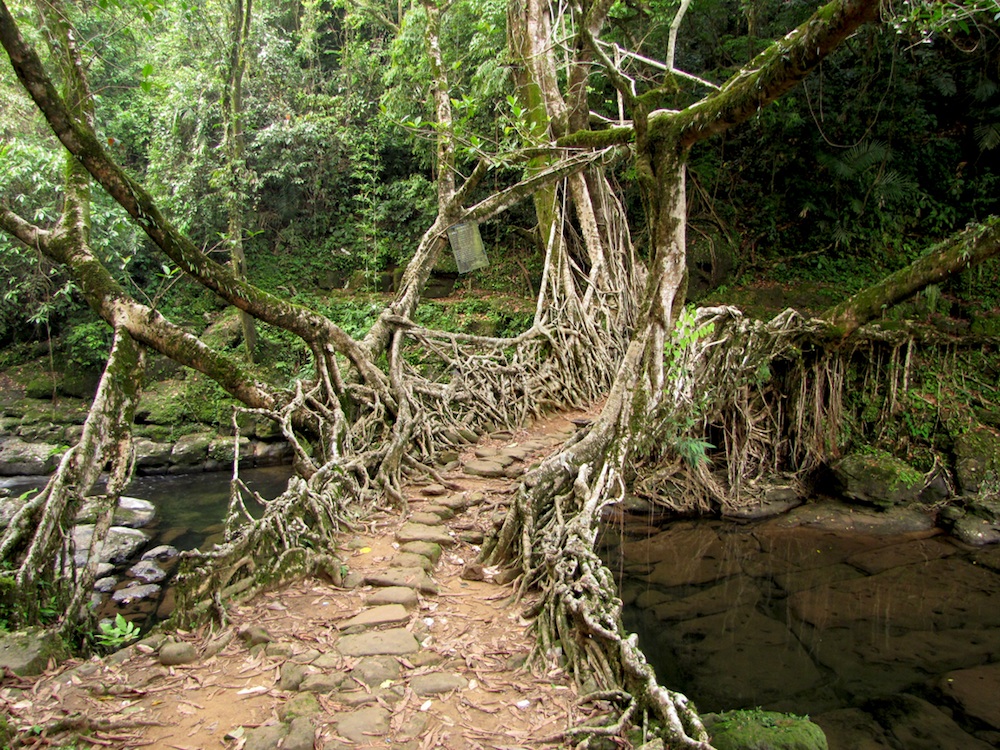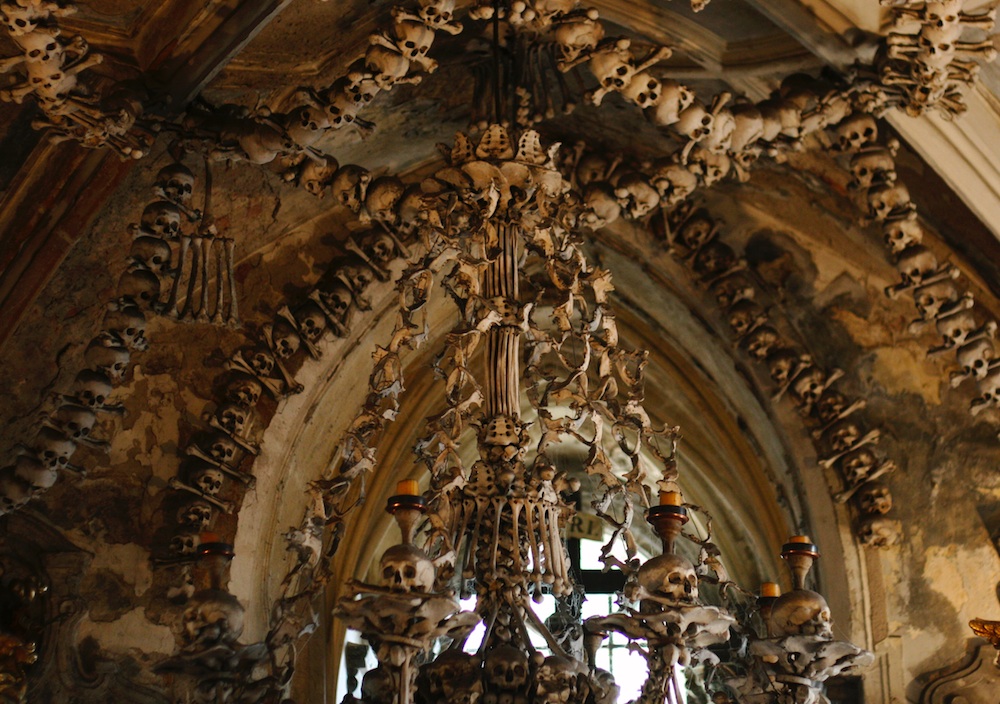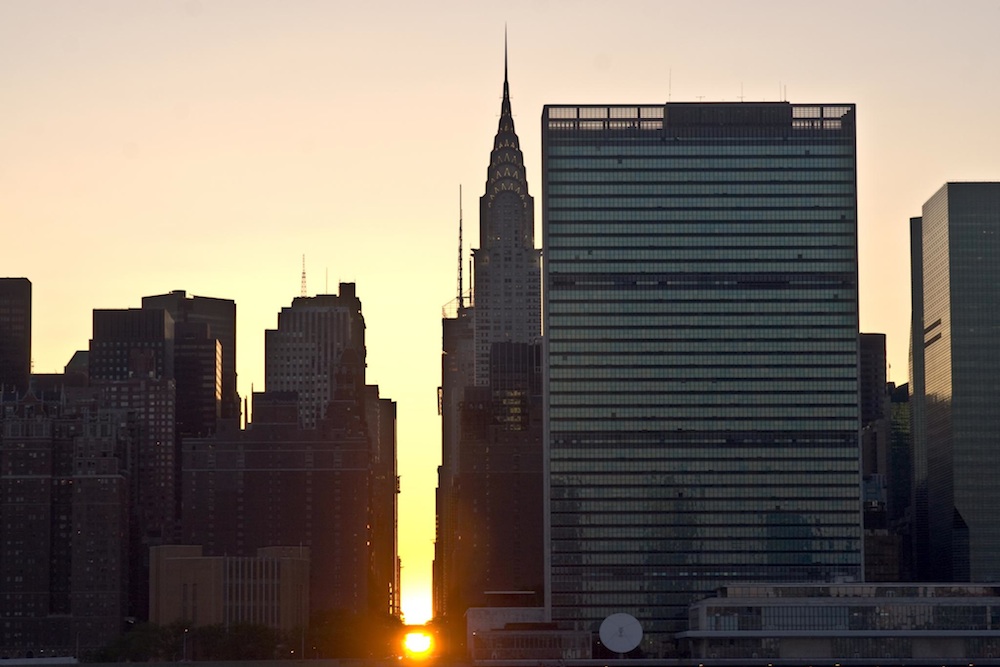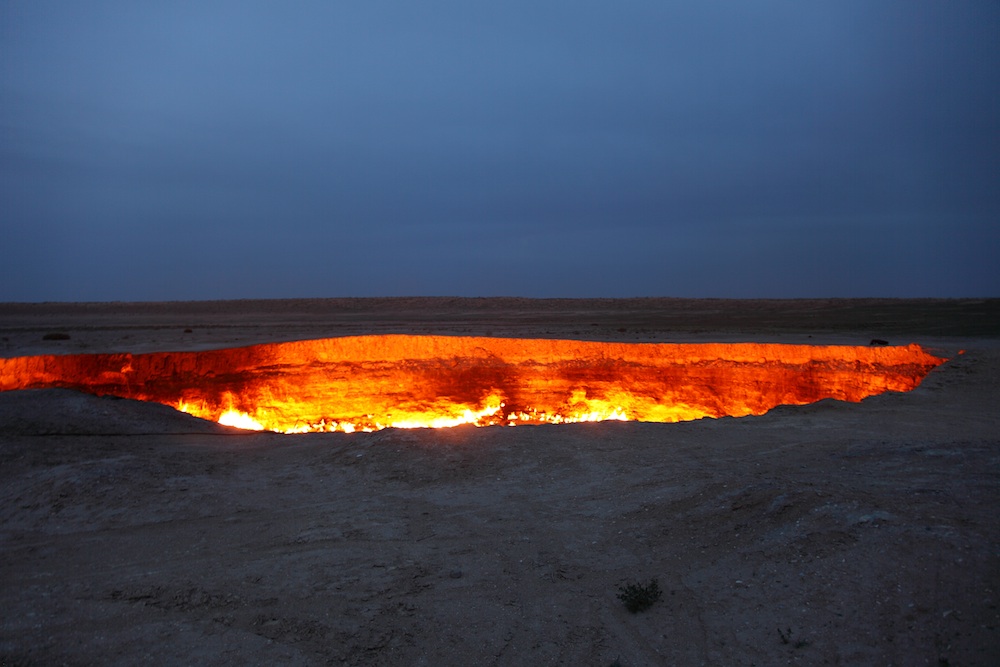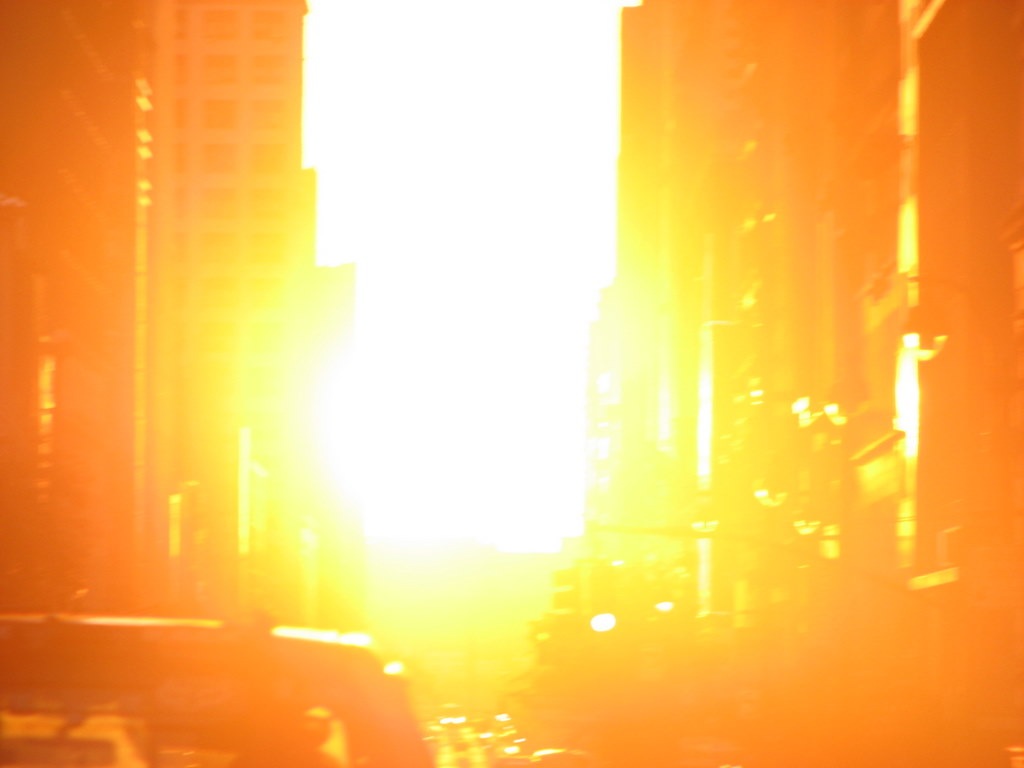
We are celebrating 15 years — and counting — of stories that are deeply researched and deeply felt, that build a historical record of what the city has been.
We are celebrating 15 years — and counting — of stories that are deeply researched and deeply felt, that build a historical record of what the city has been.
Anyone who loves cities (and if you’re reading this, we assume you do) loves wandering, exploring, looking behind the city’s surfaces to find the weird and wonderful things that make built environments so fascinating. But a love of exploration, a commitment to discovery, and sense of wonder are by no means limited to urban enthusiasts. The world is full of people whose passionate interest or first-hand knowledge of sites off the beaten track just might constitute a welcome alternative to the monuments, museums, shops and restaurants that typically determine how we navigate both foreign and familiar locales — if only someone would gather the entries of these worldwide explorers into one comprehensive, virtual collection. So that’s exactly what Dylan Thuras and Joshua Foer set out to do with Atlas Obscura, a “collaborative compendium of amazing places that aren’t found in your average guidebook.”
On April 28th, Thuras and Foer will present the third annual Obscura Day, a global event to celebrate unusual places through expeditions, tours and explorations. New York City, of course, is rife with the unusual and the fascinating, and past Obscura Days have taken participants to see the ghost ships of Coney Island Creek, the Greenwood Cemetery Catacombs, the Atlantic Avenue Tunnel and Dead Horse Bay.
If a camera obscura — the ancient invention that facilitated the two-dimensional representation of three-dimensional space — is a darkened room that renders complex reality into something imageable and discrete through a pinhole, we might conceive of an atlas obscura as a collection of maps that make the world more navigable, that demystify the obscure and turn it into the commonplace. On the contrary, the “user-generated and editor-curated” Atlas Obscura illuminates what’s around us by enhancing its users’ sense of curiosity and delight in a world that always demands to be further explored. In the conversation below, Thuras discusses the nature of discovery and the persistence of wonder. Read the interview, spend some time exploring Atlas Obscura, and then be sure to sign up for one of the daytrips planned for this year’s Obscura Day on April 28th. –C.S.
What is Atlas Obscura and how did it come to be?
Atlas Obscura started fairly simply and grew out of personal passion. My business partner Joshua Foer and I both had traveled extensively, and we shared an interest in searching out unusual places, unusual museums, things at the margins of normal travel itineraries. For both of us, it was in these places that you often found the most illuminating, interesting aspects of a city. You can go to Italy and see all of the standard stuff, but visiting La Specola to see the wax anatomical collection – just a couple blocks away from the Uffizi — gives you an entirely new perspective. So, long story short, we had an interest in this kind of stuff, but there wasn’t a resource for it. There were some out-of-print books, and there were some websites that touched on what we were looking for, but some of what’s out there is more kitsch than what we wanted. And many were missing academic and institutional collections that you might never know existed – for example, we have come across these incredible museums and collections of brains, where you can visit and learn about the history of neurology. There just wasn’t anything that spoke to the kind of unusual things we were interested in finding.
So, as we began to accumulate this information ourselves, we realized we didn’t want to make this into an online book, where we finish our research and say that we found everything of interest to us and that’s that. The more we talked about it, the more we realized that the only way to find what’s wondrous and hidden is to leave it as an open question, a standing invitation to share that information. So we built the site on a wiki-esque model.
Our ultimate goal is to provide a set of tools and a place where people can share with each other places and things “that deserves to be known.” This is some amazing little corner of the world that has an incredible story attached to it, that has a revealing history, that tells you about a place in a way you wouldn’t know if you just walked through it. That’s the goal of the site.
Travel is all about context — you can go some place and go to a museum, but if you don’t know what you are seeing, if don’t have the larger cultural and historical context, you’re just walking through space. Things that are totally incredible can be rendered completely uninteresting by lack of context and things that look absolutely mundane can be made amazing and wondrous by understanding the story.
What does the word “atlas” mean to you? What is an atlas as a concept or as a tool?
An atlas is a way of navigating the world or a set of lenses through which you can look at the world. In its literal definition, an atlas offers a representation of what the world looks like at a particular time. In a romantic sense, atlases throughout history revealed new territory. Historically, you see the transition from “here be dragons” to a revealed world. Now, we live in a time when we’re so deep into that constant revealing of new layers of information that each of us is contributing to how the world is described in some way. If you use Foursquare or any kind of location-based service, you are contributing to a new sort of atlas. Now, the idea of an atlas is more like a loose set of associated databases that all offer different ways of revealing space and information about that space. We’re in this constant, collapsing momentum where real world space and virtual space become one layer together. I don’t know what that’s going to look like – Google is going to have to make some fancy glasses or something – but that idea of revealing the hidden persists.
Atlas Obscura isn’t just about making a list of weird places (although it works that way too). We want to push into the place, because with each scrape away at the surface or each re-adjustment of the lens, there is a whole new set of hidden places, of hidden information, of hidden infrastructure that you didn’t understand was a part of your world. And when you do understand, you see things totally differently. That’s why I love this stuff; it reveals what’s around you, what’s completely mundane, and gives it this life and this energy. That’s sort of the noble idea behind what we are doing. It becomes a forum for continually trying to find a new way to look at what’s around you.
On the site, you describe Atlas Obscura as a place for people who still believe in discovery. What does that mean?
For me, the discovery is less about planting a flag on a mountaintop, the Victorian idea of wanting to “get there first.” I think everyone, anywhere can engage in acts of constant discovery, of seeking wonder.
Part of this, of course, has to do with urban exploration, but for me, it goes even further. If you choose to push a little bit past your standard routes, look around, walk into that building in Greenpoint that says “live chicken slaughter” on it, there’s so much bizarre, fascinating stuff happening right around us. It’s just about taking one step further outside of our normal routines in order to better understand the environment we live in. We all think we live in one environment and we actually live in this totally other – or really, we live in fifty different environments. Edible Geography just did a piece on spaces of banana control, which to me is a perfect example of this. There’s this entire geography, entire world map of banana existence, taking place in the kind of typical warehouse that you normally wouldn’t think twice about. For me, understanding what’s going on behind the scenes in the warehouse was a revelation and surprise. And with that greater understanding comes a sense of engagement and wonder. It’s not just about learning an interesting factoid. For me, it also generates a real sense of childlike delight and curiosity.
Another way that you describe Atlas Obscura is as an alternative kind of guidebook. A guidebook is a different image than an atlas, although both have related practical applications. Do you see the site as something primarily used by people exploring places that they are not familiar with or for people uncovering things they didn’t know about in their own backyards?
Yes and yes. The site serves a couple of different purposes and our audience uses it in a variety of ways. Some people just go and browse around, read about a random place, just for curiosity and entertainment value. Then there’s a smaller group of people who use it as an active travel resource, whom I am always thrilled to hear from and talk to. Hopefully for both groups of people, travellers or just readers, these aren’t all far-away, foreign, exotic locations. For some people, the site is a kick in the butt to go see something that you’ve always been meaning to check out. Hopefully there is something within twenty miles of you, no matter where you are. And if not, maybe you should add something to the atlas yourself.
How is the site organized, categorized, updated, edited? What’s the process?
Our users submit ideas, everything from quick tips alerting us to a location to fully fleshed out, long form articles. We have an editorial staff that checks facts, makes sure that the submission is legitimate, and often times add more information to fill out the story. Sometimes the editorial staff provides the story, if we know of an amazing place that deserves to be on the site.
Everything is mapped. You can do all kind of searches, by region or thematic category. For example, we have an “ossuaries” category where you can find collections of bones. The Paris catacombs are probably the most famous example, but there’s also a church outside of Prague called Sedlec, which has been completely decorated in human bones. It was intended to evoke the idea that our bodies are but mere shells for our souls. We also talk about lesser-known national wonders. For example, flora wonders. In the wettest region of India — and this entry was from a user tip, I had never heard about these before – people build “root bridges,” where they get the roots of trees to grow together by grafting them over a little structure they make. It takes fifteen years to grow one of these, but eventually they remove the structure and have this living bridge of tree roots. It’s known as arbor-tecture. So yeah, we have a wide range of thematic categories.
We are re-launching the site in about two months and moving to a slightly different model. We will still have categories that are very functional, like “church” or “cave,” but then we want to be able to group things together in a looser way – one set of entries might all relate to the history of poisoning, for example. There are so many ways in which these sites can interrelate.
You mentioned infrastructure as one category that interests you. Our readers, who are fascinated with how the city works, are interested in infrastructure for a variety of reasons, sometimes for professional reasons, sometimes for curiosity, or its cultural or social impact. If you can speak on behalf of your community, what is it they find wondrous or hidden about infrastructural systems?
I think there’s something fascinating about anything you can’t see but you know is there, just slightly out of reach. I think everyone in New York has an interest in, for example, the hidden, unused subway stations. It’s exciting to think of the multiple layers of the subterranean world. It fills your mind with totally foolish visions of what it’s like to navigate. This is also true of our audience that’s fascinated with, say, the old pneumatic tube system. Just knowing that it’s there, it still exists in these hidden spaces.
How else does the built environment figure in all this?
I think it comes in from a couple of different angles. There are some phenomena that are the result of architecture, such as the Whispering Gallery in St. Paul’s Cathedral. But we don’t do a lot of straight up architectural history because we feel like there’s a whole world that already exists that focuses on that. We try to find places where the architectural history is particularly attached to an unexpected or unknown story, where history and the built environment tell an incredible narrative. If you go down to Wall Street you can see buildings with these little pock marks that would be completely innocuous normally but they’re actually shrapnel scars from an anarchist bomb attack in 1920. Another great example of the way the built environment plays into this – though we actually don’t have this on the site and it’s not a single place – is Manhattanhenge, the two days a year when the sunset aligns perfectly with the east–west streets of Manhattan.
How would a phenomena like Manhattanhenge – something that is not necessarily place-based – find expression on your site?
That’s part of the re-launch. We want to mix in more editorial content with the place-oriented database. We want to give ourselves more room to talk about things that are place-oriented but not necessarily perfectly matched to a single GPS location.
Speaking of New York and Manhattan, tell me about Obscura Day.
Obscura Day is our ridiculously over-ambitious attempt to throw a world celebration of wonder. This will be our third time doing it. Last year we had over a hundred events around the world. It’s a big distributed party. We seek out unusual locations and do little expeditions to them. The sites range from back rooms in like museums or institutions that open their doors to us to show you something you wouldn’t normally see, to field trips out to a part of a city you wouldn’t otherwise go to, like the Coney Island Creek or Dead Horse Bay. It’s not just getting people to those places, it’s also the process of going with a group of curious, interested people.
This year Obscura Day will be on April 28th. There will be stuff happening around the world. In New York, we’re planning to do something at the Magic Library in Midtown and we also might be making a trip out to Staten Island with Underwater New York to check out some ruins. More events and details are still being worked out.
Who comes out for your events, and how would you define your audience?
At our field trips or Obscura Day events, we tend to get a mix of young “explore-y” types and then older history buff or engineering buff types. I really like that chance to bring disparate groups together around an interest in a place.
Our audience generally, I think, is made up of people like me, people who often would be doing this on their own anyway. They’re people who, when they travel someplace or explore their own city, take that factory tour, or go out of their way to search out interesting spots. This idea resonates with people like that, and gives them a chance to share their knowledge as well as join a community of other people who are excited about that idea of exploring our environment.
Tell me about some of the entries that jump out at you as being particularly indicative of the kinds of wondrous or hidden things that you want users of the site to learn about.
I can divide them into two categories. There’s the “holy shit, this is nuts” category, which includes things like the root bridges. In that category, I’d point to this giant flaming hole in Turkmenistan, which was created when a Soviet drilling rig sort of fell into the desert, and then released this enormous crater of natural gas. So in nice Soviet style they just lit it on fire, and it’s been burning for forty years. If you go to Google Earth and zoom in you can see the little red dot where it is. So, there are some crazy large-scale things like that.
And then, there are these other, quieter, but, to me, equally amazing places. One such place is in Japan, in a corporate park between some high rises, there’s a little pond where all the fish are descendants of fish that were taken to outer space and then deposited. It looks like nothing, it looks like a little pond surrounded by grass. But it has this great connection to exploration and space travel.
I’m also a big fan of those little tucked-away gems, those unknown collections at institutions, hospitals or universities. They tend to be slightly magical in the sense that they represent this sort of internal knowledge that just barely kind of leaks out to the wider world. I’m a big fan of medical museums and medical collections, I just find them fascinating.
It’s interesting to hear you use the words “wondrous” and “wonder” a lot. The site’s categories and the kind of entries that seem prevalent on the site reflect the sensibility of a Wunderkammer: Victorian science experiments, collections of brains, wax museums. Does the idea of a Cabinet of Curiosities inform your curatorial scrim?
Absolutely. I have my own sort of cabinet of curiosities at home. And yes, those sorts of things are amazing to me, but I don’t want it to get stuck in a mustache-twirly, 18th-century idea of…
…Taxidermy chic?
Exactly. I don’t want people to only look to the past. Today’s world has just as much of the bizarre and that sense of wonder and surprise. I think evoking that slightly out of reach sense of possibility, the sense that the world we are in right now isn’t mundane but is actually, in a sense, magical. I don’t mean magical in a supernatural way, but in the sense that if we look and we really see, the world is weird and amazing. That’s what we’re always going for.
The views expressed here are those of the authors only and do not reflect the position of The Architectural League of New York.
